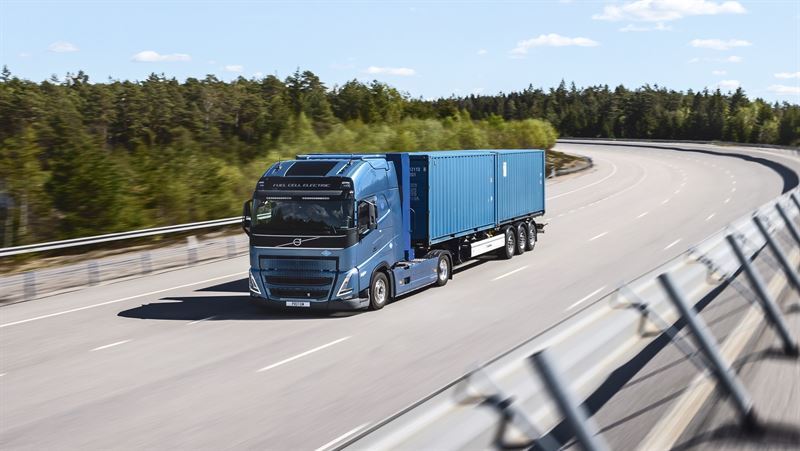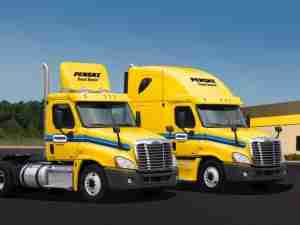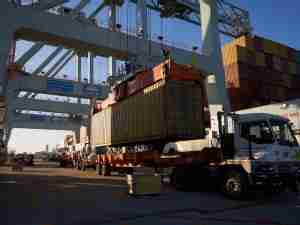- Customers are looking for sustainable growth in their supply chains.
- Electrical vehicles will play a key role.

The first requirement is management commitment to the decarbonization goal of net zero and the long-term investment in its multi-year effort. In 2018, Maersk committed to Net Zero Green House Gas emissions by 2050. Last year, that date was accelerated by 10 years to 2040 across all modes and businesses as part of a comprehensive Environmental, Social Governance (ESG) plan. In March 2022, Maersk North America ordered 436 Electrical vehicles (Class 8 trucks) to replace diesel trucks. Decarbonizing inland transportation through heavy-duty, electric trucks and the creation of charging station infrastructure benefits supply chains and communities and is central to Maersk’s inland transportation ESG plans.
Carlo Bertani, Maersk’s North America Environmental Manager said, “By using Class 8 electric trucks, we will be reducing traffic noise and emissions in the communities we serve to fully comply with upcoming regulations. Our goal in the near future is for Maersk North America to be charging our entire fleet with 100 percent renewable electricity to offer our customers an environmentally-friendly alternative for short-haul trucking.”
The second requirement in EV operations is the ability to scale and look for partners. Maersk partnered with TEC Equipment – a Volvo Trucks’ Certified EV Dealership, which helped identify the ideal truck configurations needed to operate daily freight routes. This partnership allowed Maersk to leverage Volvo Trucks’ Electric Performance Generator (EPG) tool, which simulates real-world routes and determines which ones are best suited based on environmental factors such as route details, traffic patterns, speed, payload, terrain, and ambient temperature. The EPG also considers if an opportunity charge (the optimal location for charging infrastructure) would be required. Volvo Truck's turnkey solution is used for the first six years of ownership that provides 24/7 support, scheduled and preventative maintenance, towing, and vehicle repair (including the energy storage unit and the complete electromobility system) to ensure peak vehicle uptime, performance, and productivity.
“Both Volvo Trucks and TEC Equipment continue to go above and beyond to support our growing battery-electric fleet operations. One example is the ongoing training they are providing to help our drivers optimize the range of the Volvo VNR Electric, including how to leverage regenerative braking benefits to add power back to the battery,” said Michael Gallagher, Head of Indirect Sourcing, North America, at Maersk North America.
One of the challenges with the operation of Class 8 EVs is the lack of charging infrastructure. To mitigate this, Maersk is working cooperatively with public utilities and local officials to ensure that charging infrastructure is built in strategically-placed locations to maximize the efficiency of trucking operations. The company also worked with its warehouse leasing partner’s mobility unit, Prologis Mobility, to combine electric charging infrastructure into existing warehouse facilities to optimize truck deployment.
To comply with future regulations, Federal, State, and Local funding incentives are aimed at accelerating the scalability of EVs. EVs and battery performance are still in the early years of adoption and do not come without challenges. The cost of an electric vehicle is 2-3x more than a diesel vehicle and while battery performance will evolve to improve in duration and weight reduction, the reality is those early adopters of the technology are working to determine the best path forward. For example, current battery technology averages 275 miles on a full charge, and a battery can add >6000 lbs. of extra weight to a truck. Charging time depends on the battery’s state of charge, the charging rate of the dispenser, and the truck’s ability to accept a certain rate of charge. Initial charging times are approximately 75 minutes but are improving over time.
Regulatory compliance with climate change goals in California and New York is bringing new mandates for all new trucks to be zero emissions by 2045. The State of California has a target of 100 percent of passenger and light-duty truck sales to be zero emissions by 2035 and medium and heavy-duty trucks by 2045.


_-_28de80_-_9b2f972cdce64d5f7c8d952d74a16521db70a589_yes.jpg)





